There was a sign in our Albergue to say ‘last person out should turn off the light switch’. Whoever was first out, around 5.00am, missed the light switch and turned off the entire power. So we woke to darkness and no lights or power. No coffee for us this morning! Using our head torches we packed up and left. The power thing only reinforced the sense that it was time to leave Atapuerca behind as quickly as possible. I was trapped in yesterday, and still thinking un-pilgrim thoughts as we stormed off up the main street, completely missing the arrows and sign pointing to a turnoff to the left.

We continued up the road for about 400 metres before realising we had not seen an arrow for a while. Looking across a wide field we could make out a small group of pilgrims making their way uphill in the distance, parallel, and increasingly distant from us. So we turned back and found the correct turnoff. It was a lesson in focusing on the present, and leaving the past behind. The Stoic philosopher Marcus Aurelius suggests a good practice for such days as we had just experienced:
“Say to yourself in the morning: Today I shall meet people who are meddling, ungrateful, aggressive, treacherous, malicious, unsocial… but the nature of the offender is akin to my own — sharing in the same mind, the same fragment of divinity. Therefore I cannot be harmed by any of them as none will infect me with their wrong, nor can I be offended by my kinsman or hate him. We were born for cooperation, like feet, and hands and rows of upper and lower teeth. So to work in opposition to one another is against nature: and anger or rejection is opposition.” [Meditations Book 2/1]
And to be fair, if we miss a meal or two, is it such a bad thing? There are always alternatives, and we chose not to seek them. We could have easily taken a cab to Burgos, had lunch, and then returned to Atapuerca. Our expectations were thwarted. But surely that is just another Camino lesson about setting expectations.
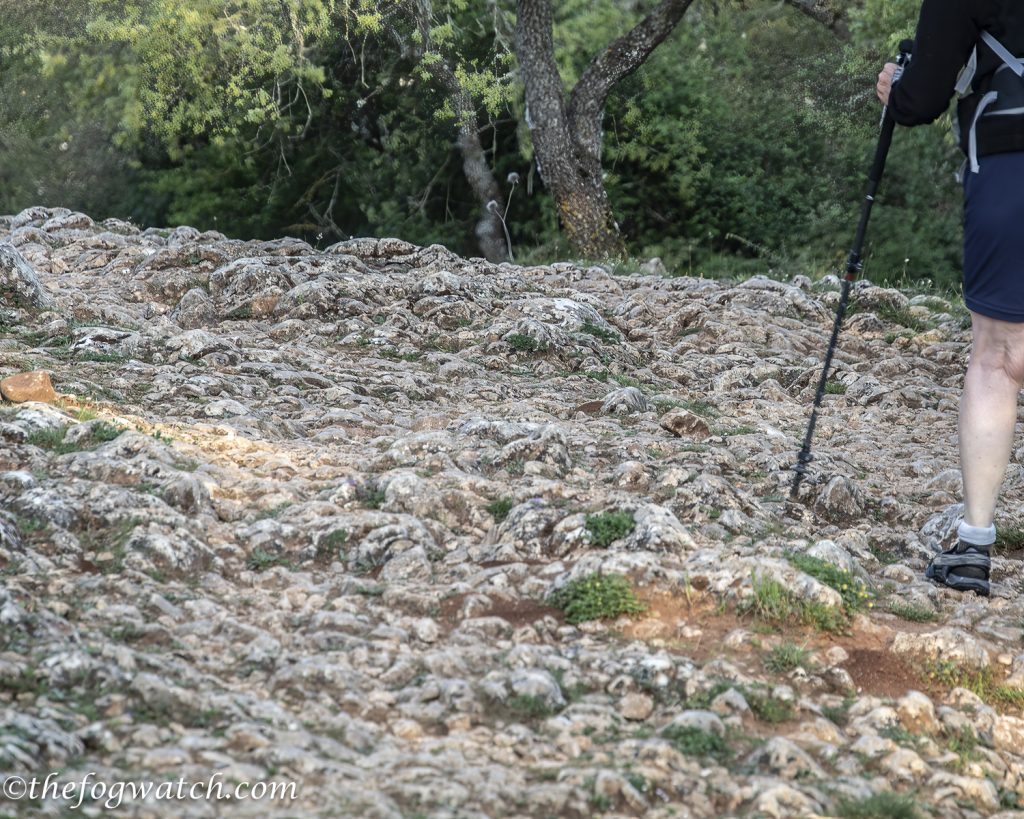
The track up Sierra de Atapuerca is rocky, with some steep sections of sharp flint. We needed to watch each step. I could see why this area would have been a great site for the large-scale and long-lived production of stone tools for Neanderthals and early modern humans.
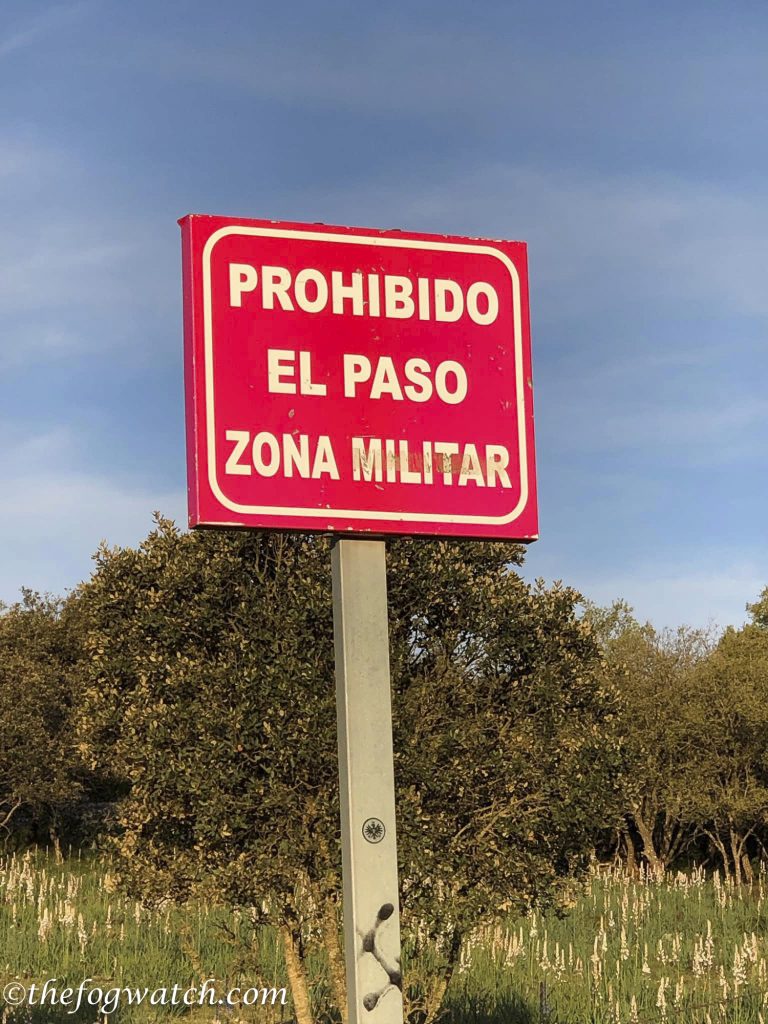
The track climbed past a military firing range. I walked the labyrinth using the moment to refocus on my Camino intentions. The military site brought back memories of working as a Defence civilian, while the magnificent view of Burgos that stretched out before us was a great reminder of our present and where we are heading.
A cross stood at the top, and several people had left stones there. The large wooden cross is not the Cruz de Ferro despite the many stones.
We descended and walked beside the road through a couple of villages and arrived at Cardeñuela Rispico where we found a cafe for a hearty breakfast of bacon and eggs and a pot of tea. Our spirits were revived, but the descent from Sierra de Atapuerca had taken its toll on our knees. We were facing a lengthy walk through the outskirts of Burgos. But from our previous Camino we remembered that there is a much more pleasant path along the river. After Orbaneja, we took the path through the hamlet of Casteñares and towards a housing development. Watch for the row of large recycling and waste bins on the left near a block of newish apartments, and turn left there. Soon the road was behind us and once past the airport we were among scrubby nature.
We continued on and stayed on the nature side of the river until we passed the Museum of Human Evolution. Then onward to the next block where we reached the main bridge leading to the Gothic portal. Our hotel (Hotel Gotica) was on the left and the room had a view of the bridge and portal. We were looking forward to a rest day in Burgos. We found our room, had a quick shower, and left to explore the city.
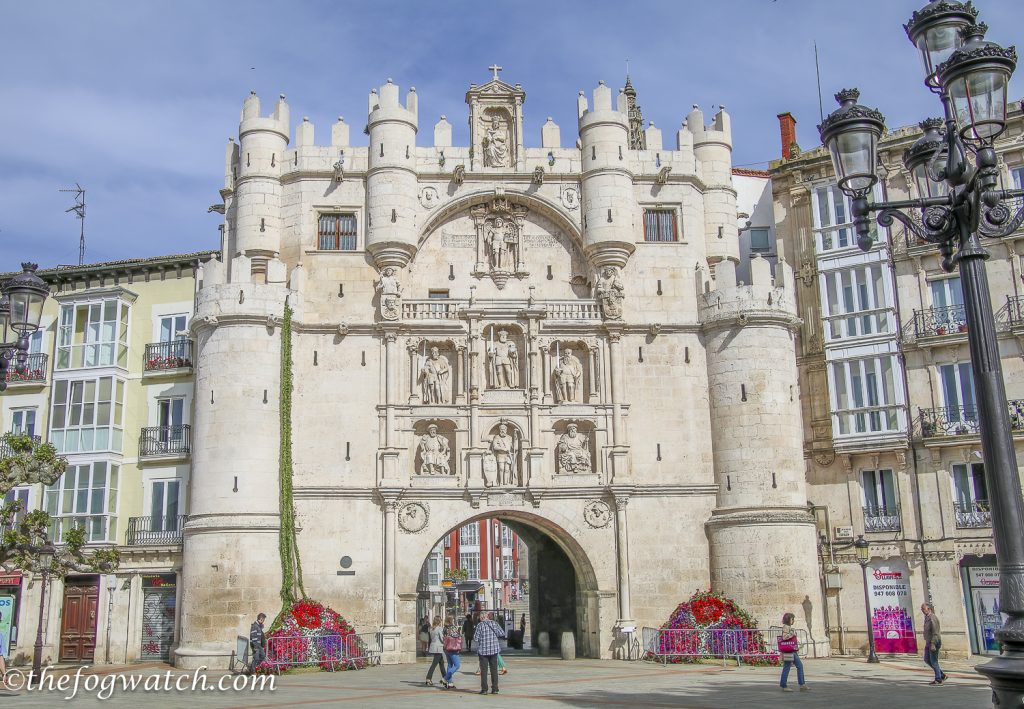
Our hotel was just across the bridge and we passed through the impressive castellated portal. And from here we were straight into the centre of the old town of Burgos. There, before us, was the main plaza and the magnificent cathedral which we would explore later.
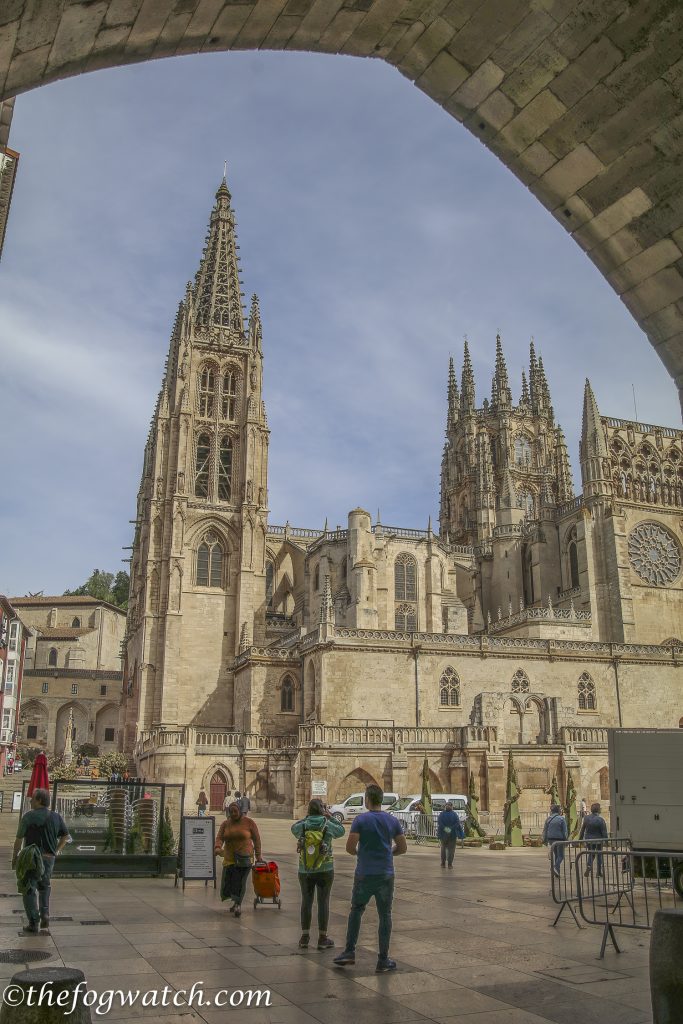
But first, food! Cafe Bonfin provided delicious food, tea and best of all fresh-squeezed naranja zuma orange juice straight from the orange. There are few more refreshing drinks in the world than fresh juice from Spanish oranges! And we had good company as we were joined by a couple of other pilgrims, John and Vivien from California, and another American woman whose name I didn’t catch.
Refreshed from the food and conversation, we visited the Cathedral dedicated to Santa Maria. The cult of Mary is strong throughout Spain. The Cathedral is a spectacular achievement of French Gothic architecture, one of the finest outside of France itself. Many of the statues and and niches have been maintained or restored to their former polychrome glory.
Burgos Cathedral itself was begun in 1221 although finally completed in 1765 — 500 years in the making! It was built on the site of an earlier Romanesque cathedral built by Alfonso VI (1065-1109). The foundation stone of the current cathedral was laid jointly by Bishop Mauricio and the king of Castille and León, Saint Ferdinand III on 20 July 1221.
Constructed in a cross-shape, there are 18 chapels inside. Juan de Colonia built the twin entrance towers in the mid-C15th, and these frame the intricately carved front entrance. The delicate stone tracery in the spires seems reminiscent of Moorish architecture — although others point to German influence.
I took many photos of architectural details. There are wonderful carvings including the 103 seats in the choir stalls with grotesques reminiscent of a Geiger monster decorating every nook and cranny. These were carved in walnut by Andrés de Nájera, Simon de Bueras, Felipe Bigarny, and Garciá de Arredondo between 1506 and 1510. [Thanks for the additional information from your comment, Bert :-)]
The seats in the choir stall depict a range of intricately inlaid motifs. This one, shows a pair of cherubs urinating into a planter or fountain!
The Papamosca (fly-catcher) clock is a highlight — the eponymous character opens his mouth as the bell strikes the hour.
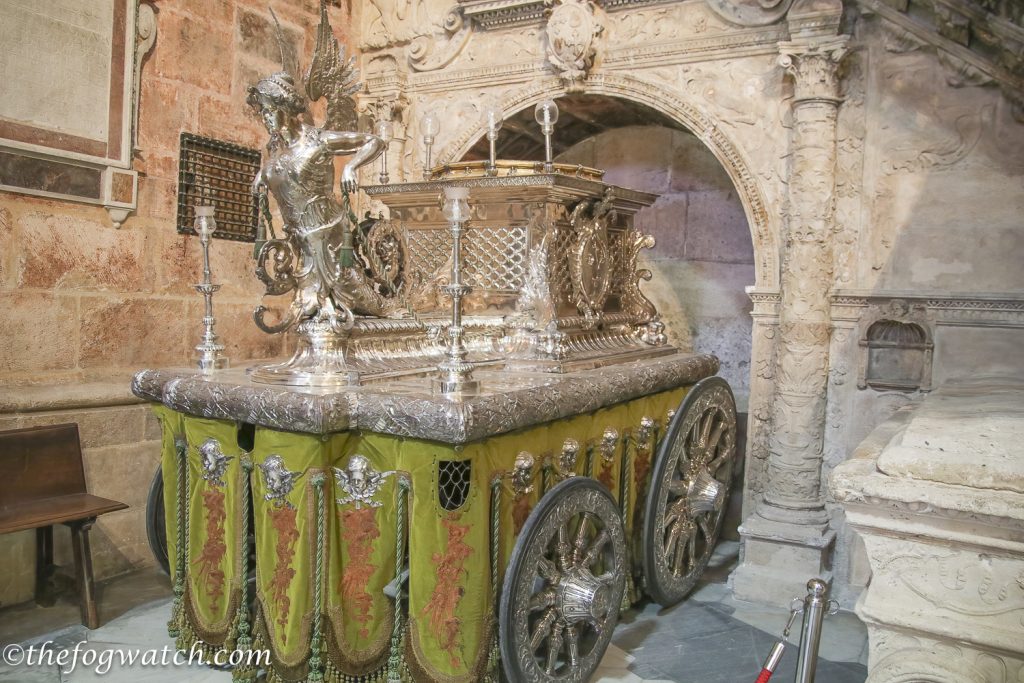
I was intrigued by the processional carriage parked beside the staircase — it has been used in the Corpus Christi procession as far back as 1900. The silverwork is extraordinary. It is easy to imagine a grand procession with an effigy of the Virgin being paraded through the streets. It would be towed and pushed by rows of hooded penitents and led by members of the clergy and high-ranking families.
A bronze plaque set on a jasper ledger marks the tombs of El Cid — Rodrigo Diáz de Vivar — and his wife Doña Jimena. The legendary military leader, respected by Christians and Moslems alike, could form a whole blog post just for him and his exploits. His extraordinary life intersected with a turbulent time in Spain’s history.
In the cloister there is a long wooden box, with the nameplate identifying it as ‘El Cid’s Cofre’. This is not his coffin, but rather ‘Cofre’ just means a box. In this case, a strongbox for storing valuable items like books, fine textile clothing or gold items. It was constructed with heavy iron bands and clasps and an impressive padlock.
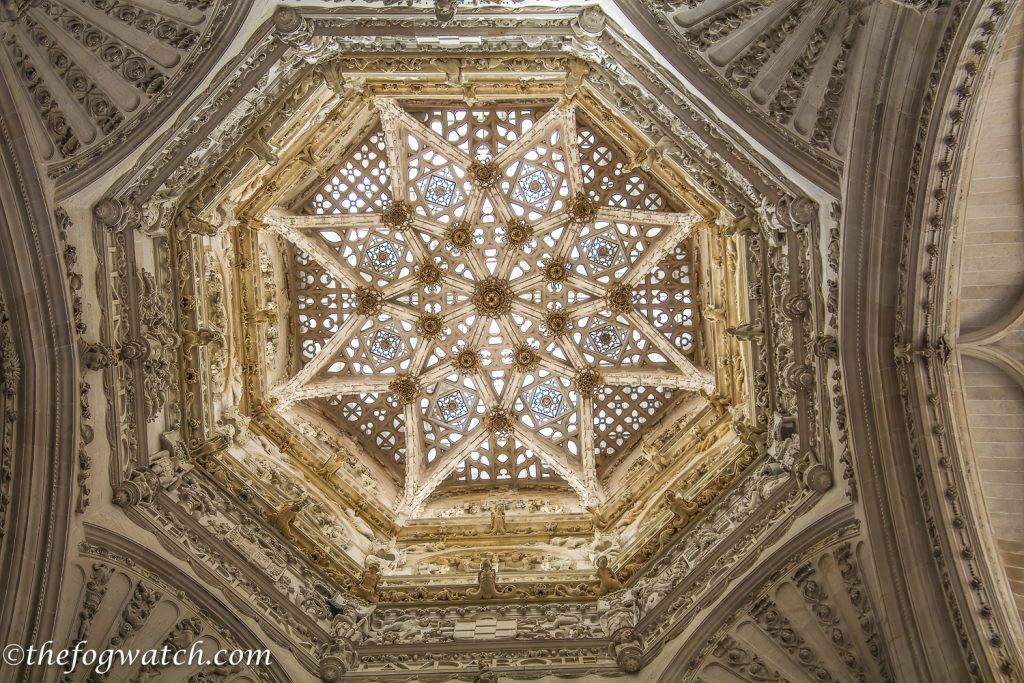
At the Crossing, it’s worth looking up as there is a delicate stone lacework star, lit by the lantern tower above. This was the work of Juan de Villejo in 1561.
Honestly, I could spend a couple of hours in there just marveling at the skilled craftsmanship in all the details from carvings to the gilded retablo behind the altar and the many paintings in the side chapels.
Outside, we went along the side of the cathedral and encountered an extraordinary carved fountain dating from the C14th and given a facelift in 1663 by the Cantabrian artist Clemente de Quintana. A royal decree concerning the fountain settled a dispute regarding who should pay for its maintenance and repair. Located in the Plaza de Santa Maria, the fountain is topped by a statue of the Virgin, but the base has water flowing from phallic florid nozzles interspersed between figures with legs splayed wide, perhaps symbolic of fertility. Beneath these are larger figures sitting astride giant fish. Certainly, in medieval manuscripts, it is not uncommon to find profane imagery contained in sacred texts. And perhaps this fountain, being outside the Cathedral functioned like the marginalia in illuminated manuscripts. If you know more about this fountain and its imagery, please let me know in the comments below 🙂
There is a deeper history to this fountain that goes back to when the Burgos plain was mostly farmland and vinyards with a small town hosting several mills fed by myriad streams, and of course, the River Arlanzón. As the town grew, the streams that provided drinking water became polluted with detritus from mill dams and molehills. In 1239 the Mayor of Burgos, Fernando, granted a stream to the monastery. They built a freshwater pond next to the church that would become the cathedral. This was a smart move for the church as people would gravitate towards the cathedral for fresh water, building the association between bodily and spiritual cleanliness.
Building a contained fountain would further strengthen the ‘water cooler’ effect and build a community around people’s daily activities. The designer built the fountain around nature themes. The floral forms and fertility symbolism helped to draw together the superstitious pagans with the growing Christian community. These days, a close look at the fountain might seem ‘not safe for work’ but it was certainly tame enough for the clothes washers, children, and town gossips in years gone by 🙂
Dinner in a restaurant on the square provided one of my favourites: Lentejas Medievales — or medieval lentil stew — a meal that dates back to the middle ages, providing sustenance and protein for weary pilgrims for centuries past. Our hotel was just across the bridge. And as the sun went down, we made our way through the portal and back to a comfortable bed and our view across the bridge.
Our journey today took us from Atapuerca, and a Camino lesson about expectations, through tranquil villages, and a gentle river route, to find ourselves in the centre of Burgos, with its magnificent cathedral and curious fountain, and thence to a dinner fit for a medieval pilgrim.

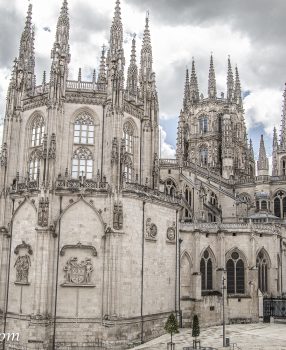
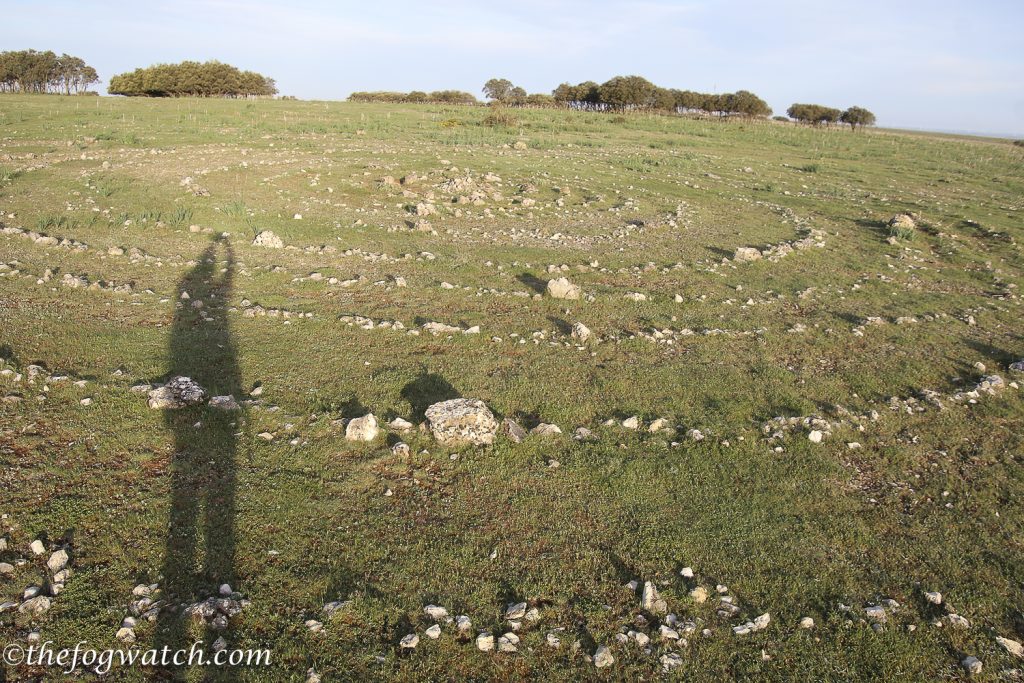
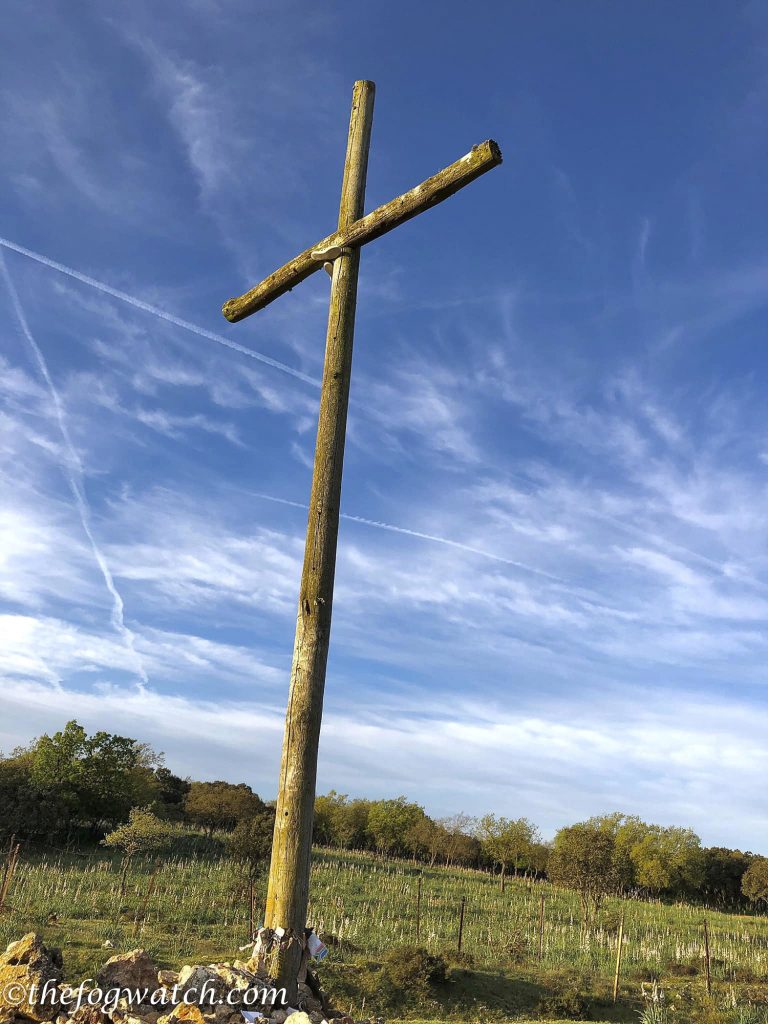
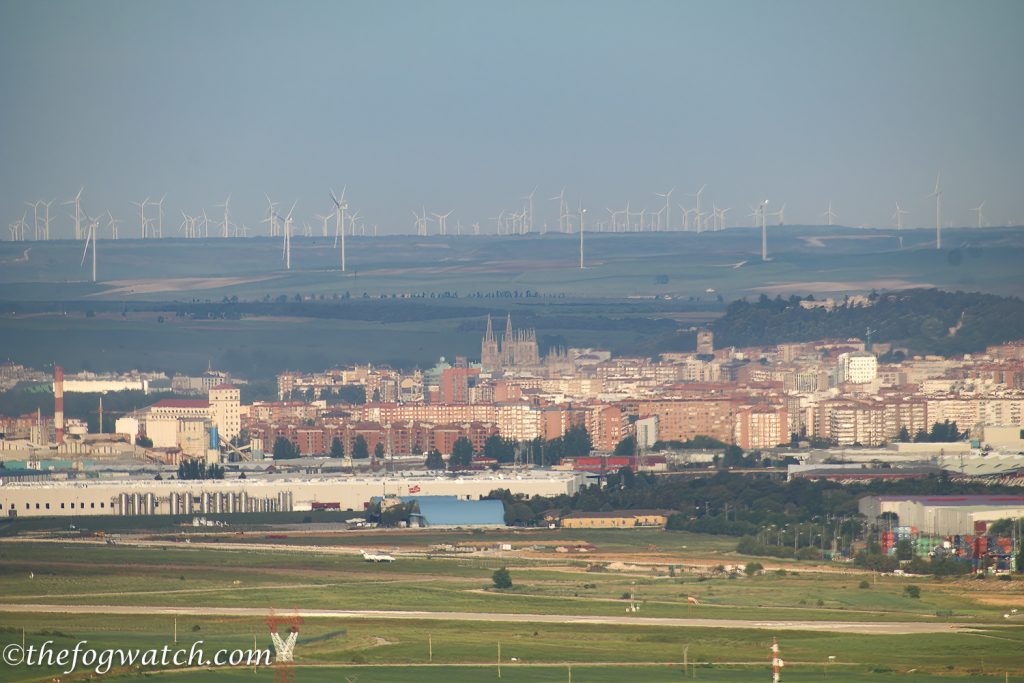
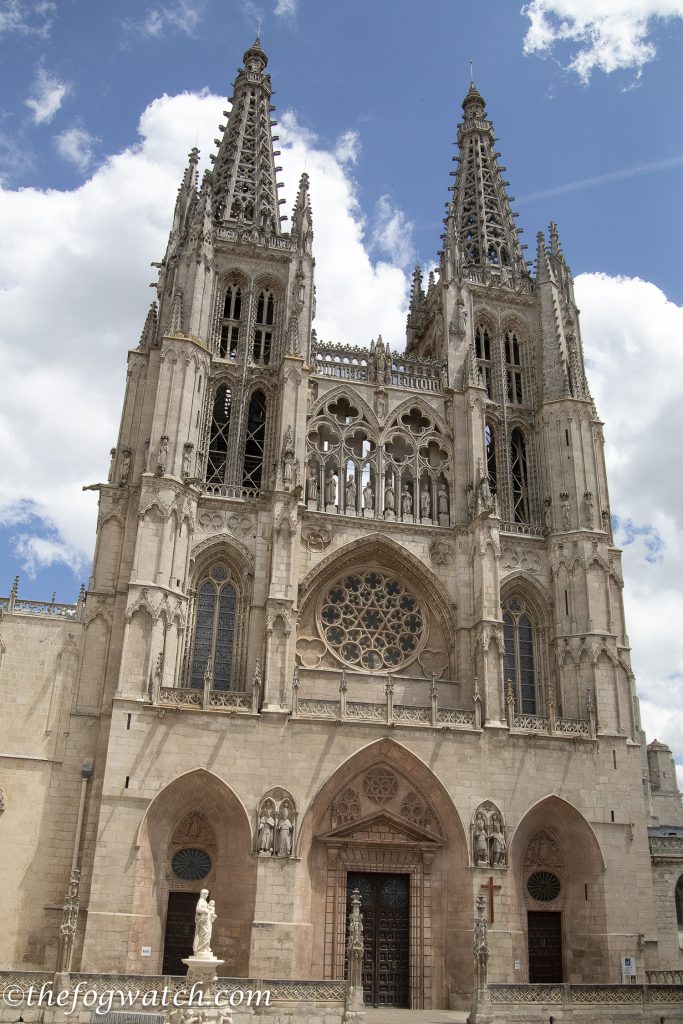
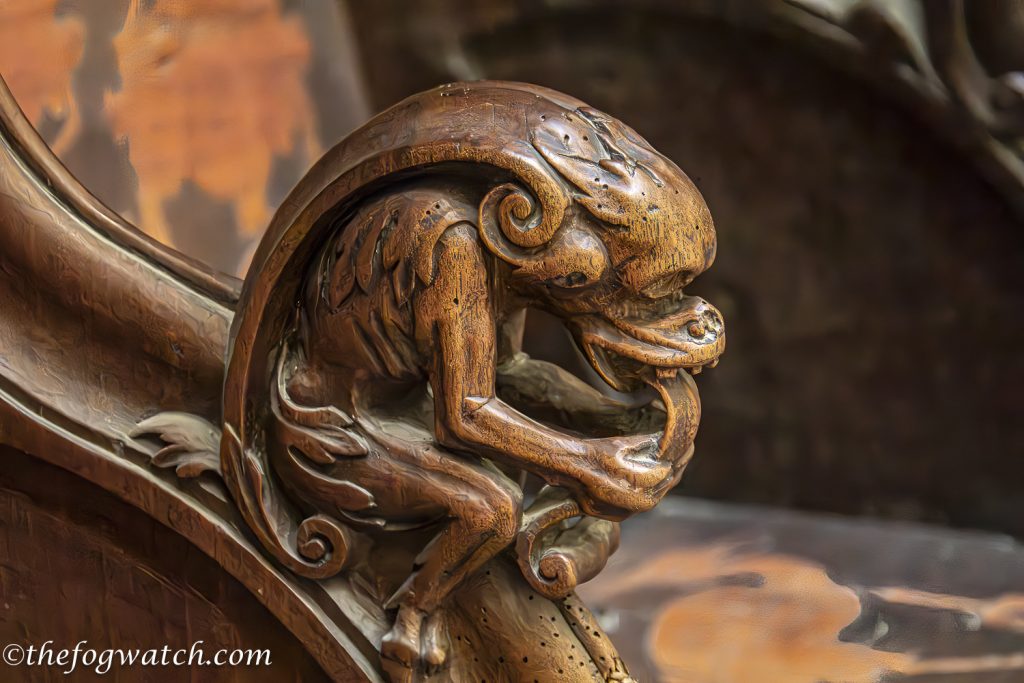
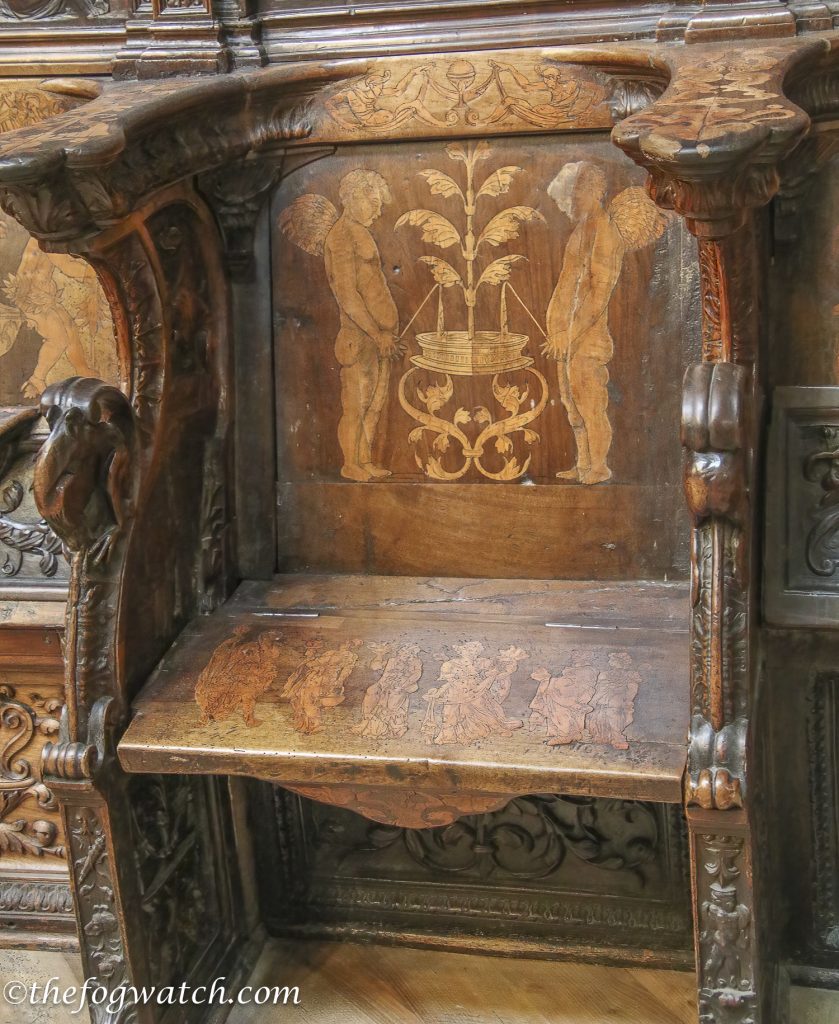
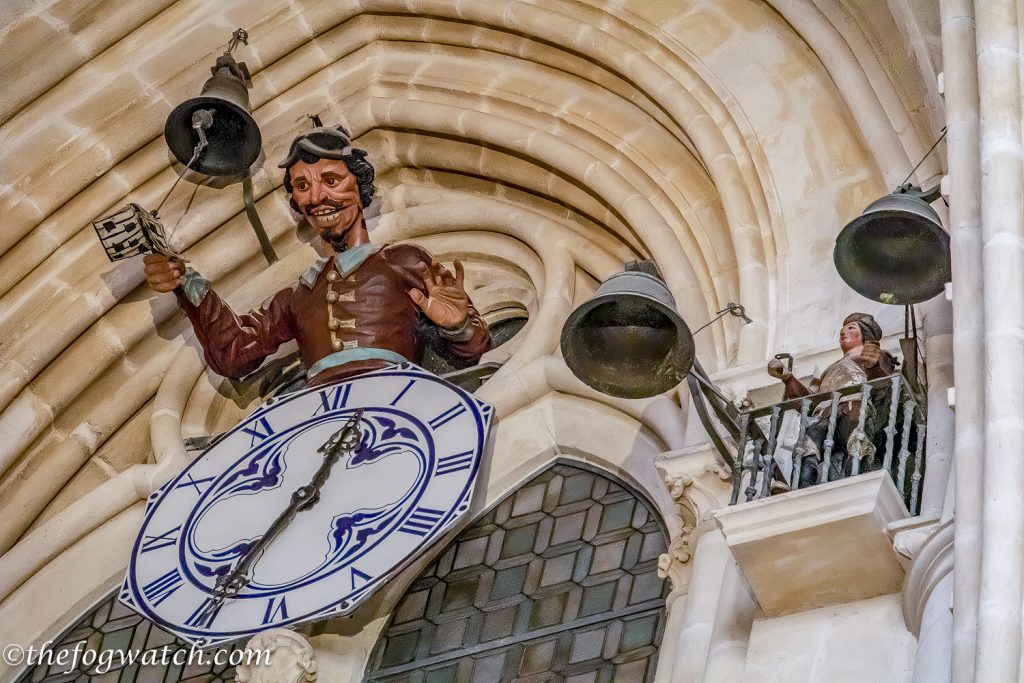
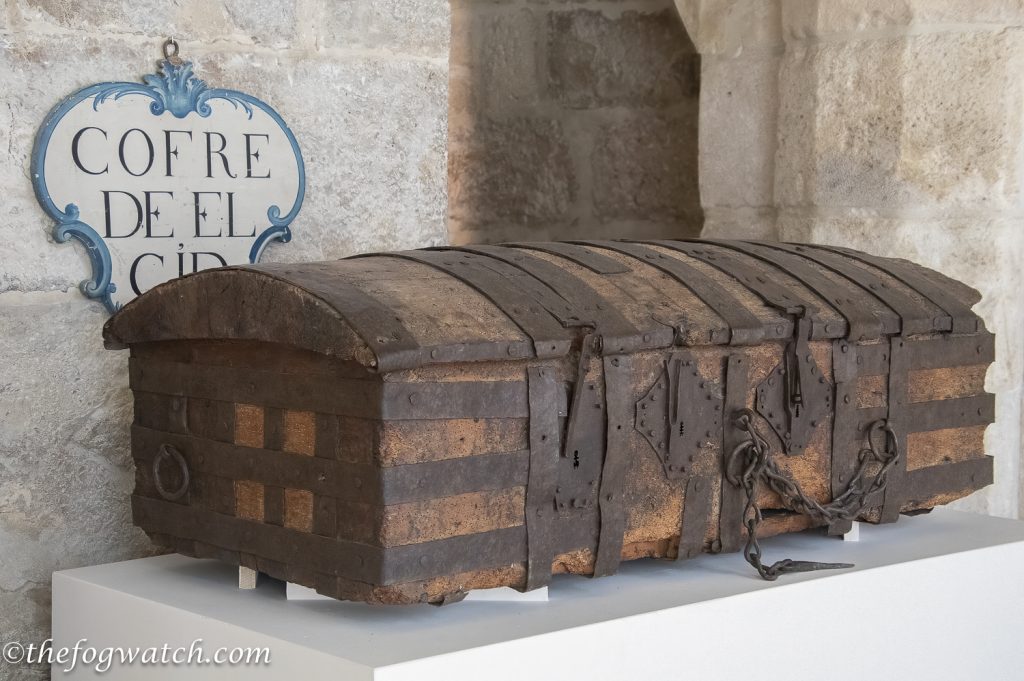
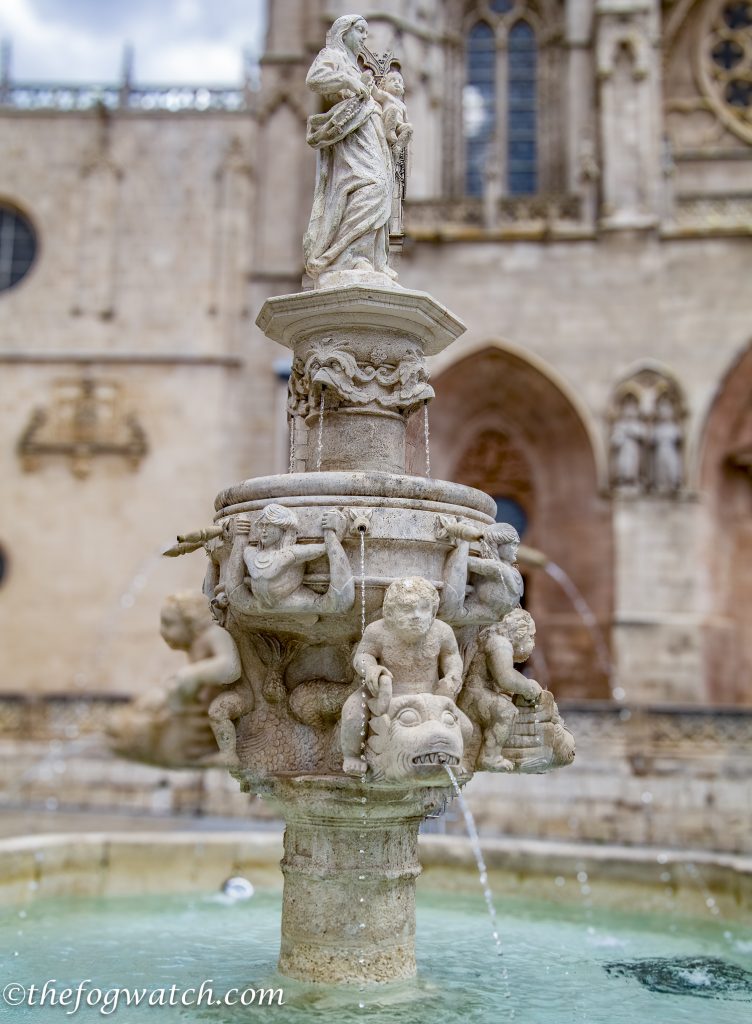
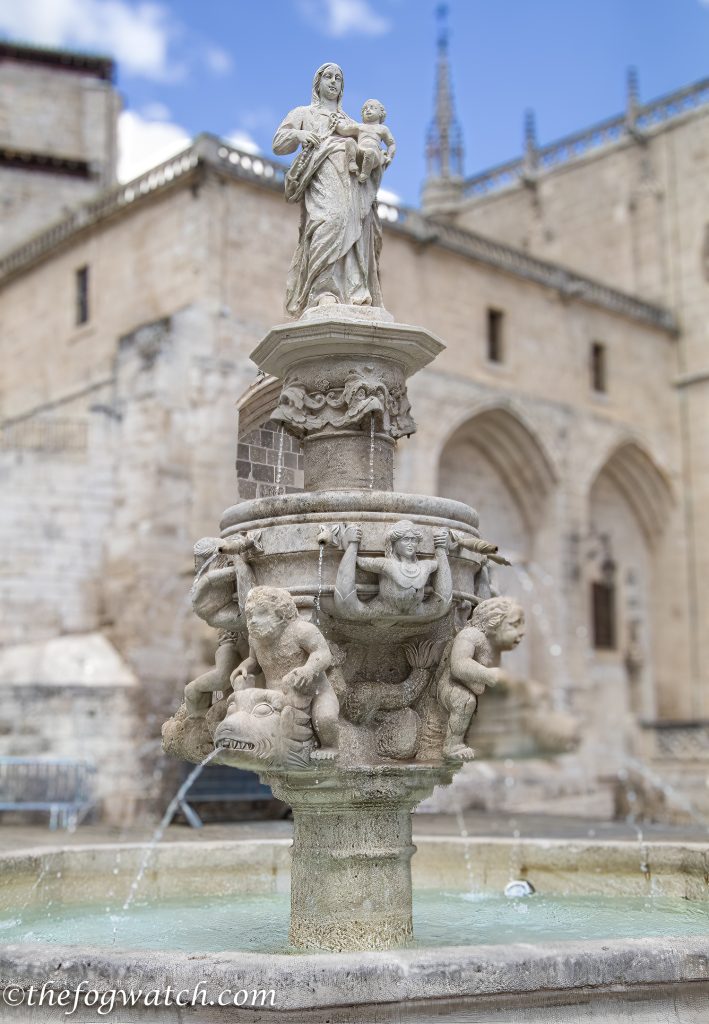
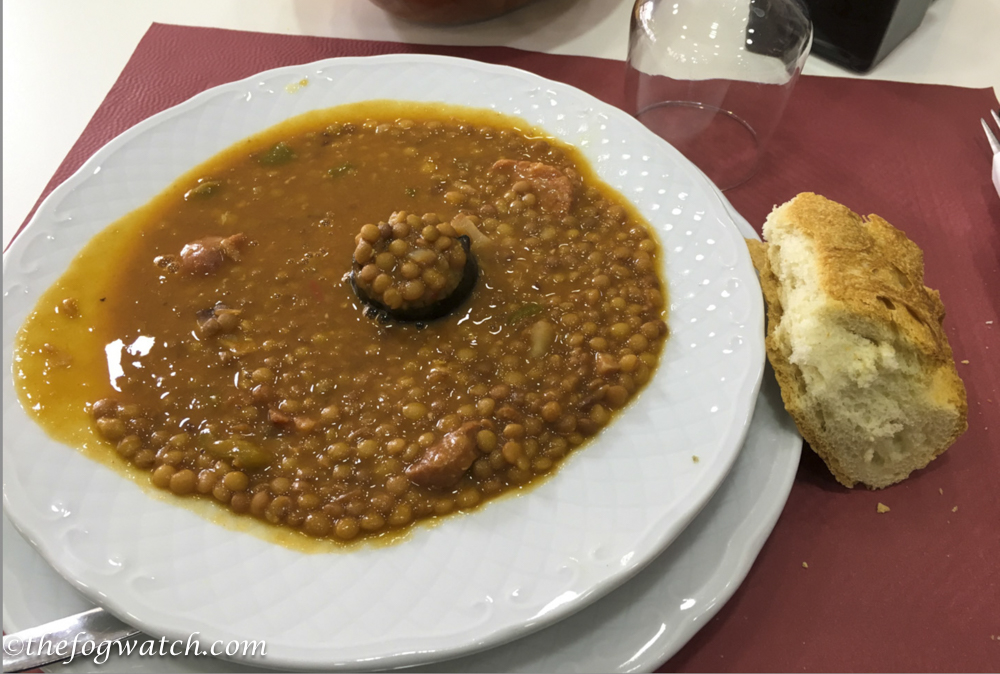
“These were carved in walnut by Andrés de Nájera, Simon de Bueras, and Garciá de Arredondo between 1506 and 1610.” Did you mean ‘between 1506 and 1510’? I’ve seen several dates for the stalls over the internet, but most seem to say from 1509 to 1512. Most also mention Felipe Bigarny
Thanks Bert – I’ve updated the post accordingly 🙂
Always fascinating. Thank you for sharing your journey.
Thanks Ann — much appreciated 🙂